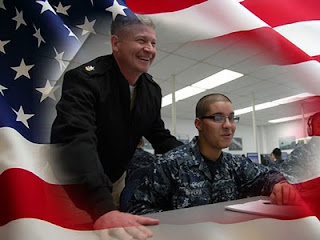Reviewed by Nancy Harrity
As the social media debate continues inside of the military, government and corporate entities worldwide, Clay Shirky continues to enlighten today’s leaders about how “our social media tools aren’t an alternative to real life, they are a part of it,” in his latest book, Cognitive Surplus: Creativity and Generosity in a Connected Age.
While this book is not on the Navy’s Professional Reading Program list, any Navy leader looking to find new ways to engage their Sailors and to harness their efforts can benefit from Shirky’s analysis of what can happen when ordinary individuals pool their cognitive surplus, their cumulative free time in aggregate, toward a common purpose. With the diffusion of social media tools throughout the world, others are benefiting from cognitive surplus in ways the Navy has long enjoyed, even though we never called it that.

Sailors at sea are particularly adept at finding creative and useful ways to use their cognitive surplus – for purposes both good and not-so-good. Why? They’ve always had the three things that the rest of the world are just getting access to thanks to improved social applications of technology – means, motive and opportunity -- the very same traits that make any military unit successful in meeting its mission.
Each ship at sea has a certain number of people populating it in a limited amount of space. Sailors run into the same people everywhere on the ship, all the time unlike the general population. This frequent contact and knowing something about everyone simplifies coordinating activities and finding others with similar interests. Once their work is finished for the day, the obvious motive is to get their mind off their work or to do something that provides them with something they might not get from their work, such as autonomy or the opportunity to share knowledge and competence in a non-work-related skill. With outside distractions at a minimum on a ship, Sailors get very creative in what they do in their off time on the ship. While they don’t have a lot of free time, Sailors at sea make the most of every opportunity they have.

Before YouTube, Facebook, Flickr, blogs, etc., the general public usually did not see the results of a ship’s crew’s cognitive surplus as there wasn’t an easy way to share it. On my second deployment on USS Shenandoah (AD 44), crew members created amazing Christmas decorations for the ship from surplus and scrap materials, but only the crew members saw that. Generally the only people writing for audiences outside the ship, taking photos and shooting video were the ship’s photographer’s mates and journalists. We didn’t have an easy way to share photos or videos of the decorations. The only people who were able to visit the ship were family members participating in a Tiger Cruise at the end of a deployment and if we had tours during our port visits. Today it is very different. Anyone anywhere in the world can check out Sailor-produced videos on YouTube, photos on Flicker or both on Facebook and on blogs.
Before you get hung up on any particular tool as is common in these debates, Shirky reminds his readers, “the use of a social technology is much less determined by the tool itself; when we use the network, the most important asset we get is access to one another. We want to be connected to one another,” and our use of social media allows us yet another means to. Social media allows Sailors to connect to each other, not just within their commands, but across the entire Navy to learn from one another, to coordinate efforts and to share best practices and ideas, all of which can save time and effort as well as improve job performance. How are you going to harness social media at your command?
Thanks to guest reviewer Nancy Harrity for her post this week. We're looking forward to more Knowledge Management insights, as they apply to the lives of Sailors, in the months ahead. -- Bill Doughty
No comments:
Post a Comment